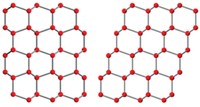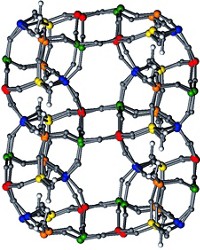Advertisement
Grab your lab coat. Let's get started
Welcome!
Welcome!
Create an account below to get 6 C&EN articles per month, receive newsletters and more - all free.
It seems this is your first time logging in online. Please enter the following information to continue.
As an ACS member you automatically get access to this site. All we need is few more details to create your reading experience.
Not you? Sign in with a different account.
Not you? Sign in with a different account.
ERROR 1
ERROR 1
ERROR 2
ERROR 2
ERROR 2
ERROR 2
ERROR 2
Password and Confirm password must match.
If you have an ACS member number, please enter it here so we can link this account to your membership. (optional)
ERROR 2
ACS values your privacy. By submitting your information, you are gaining access to C&EN and subscribing to our weekly newsletter. We use the information you provide to make your reading experience better, and we will never sell your data to third party members.
Analytical Chemistry
Solving Structures From Phase Information
Electron diffraction method allows structures to be determined directly
by Celia Henry Arnaud
August 19, 2013
| A version of this story appeared in
Volume 91, Issue 33
Crystal structures are described by phase and magnitude components. The phase indicates the location of matter within the crystal, and the magnitude tells how much matter there is. Usual methods of structure determination are indirect, relying exclusively on magnitude. Structures are deduced by iteratively refining computational models and matching them to experimental observations. Now, Philip N. H. Nakashima, Alexander F. Moodie, and Joanne Etheridge of Monash University, in Melbourne, Australia, report a method that determines structures directly from observations of the phase from electron diffraction patterns (Proc. Natl. Acad. Sci. USA 2013, DOI: 10.1073/pnas.1307323110). They use the phase information to plot the planes where matter is most likely to be in the crystal. Where those planes intersect indicates the locations of atoms. By determining the phases associated with just seven diffraction patterns, they were able to solve the structure of α-Al2O3 to within 0.1 Å. So far, the method works only for structures with a center of inversion; the researchers are working to extend it to noncentrosymmetric structures.




Join the conversation
Contact the reporter
Submit a Letter to the Editor for publication
Engage with us on Twitter